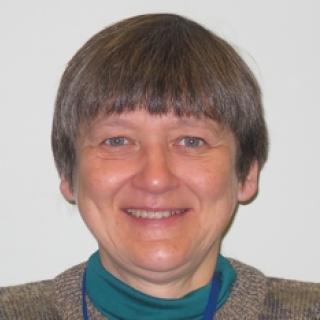David A. Ball, Ph.D.
- Center for Cancer Research
- National Cancer Institute
- Building 41, Room C615
- Bethesda, MD 20892
- 240-760-7023
- ballda@mail.nih.gov
RESEARCH SUMMARY
Dr. Ball is a Staff Scientist in the Optical Microscopy Core (OMC) which specializes in live-cell imaging, and quantitative biophysical methods. His primary role is to develop and maintain custom microscopes and train investigators on their use. Dr. Ball’s research interests include the development of custom microscopes, software and models to extract and interpret biophysical parameters in cellular processes.
Areas of Expertise
David A. Ball, Ph.D.
Research
Dr. Ball is a Staff Scientist in the Optical Microscopy Core (OMC) which specializes in live-cell imaging, and quantitative biophysical methods, such as Single-molecule Tracking (SMT), Förster Resonance Energy Transfer (FRET), and Fluorescence Recovery after Photobleaching (FRAP). His primary role is to develop and maintain custom microscopes and train investigators on their use. Dr. Ball’s research interests include the development of custom microscopes, software and models to extract and interpret biophysical parameters in cellular processes.
Publications
Single-molecule analysis of steroid receptor and cofactor action in living cells
Quantifying transcription factor binding dynamics at the single-molecule level in live cells
Vaccine Induction of Lymph Node–Resident Simian Immunodeficiency Virus Env-Specific T Follicular Helper Cells in Rhesus Macaques
Single molecule tracking of Ace1p in Saccharomyces cerevisiae defines a characteristic residence time for non-specific interactions of transcription factors with chromatin
Steroid Receptors Reprogram FoxA1 Occupancy through Dynamic Chromatin Transitions
Biography
David A. Ball, Ph.D.
Dr. Ball completed his B.S. in Physics at the University of Albany in 2000. He then went on to earn a Ph.D in Physics at the University of Tennessee in 2006, where he worked on improving the use of fluorescence correlation spectroscopy for pharmaceutical drug discovery using an applied flow. Dr. Ball then joined the laboratory of Jean Peccoud at Virginia Tech, where in collaboration with John Tyson, we performed live imaging of cell cycle regulators in budding yeast. Dr. Ball joined the Optical Microscopy Core in 2015.
